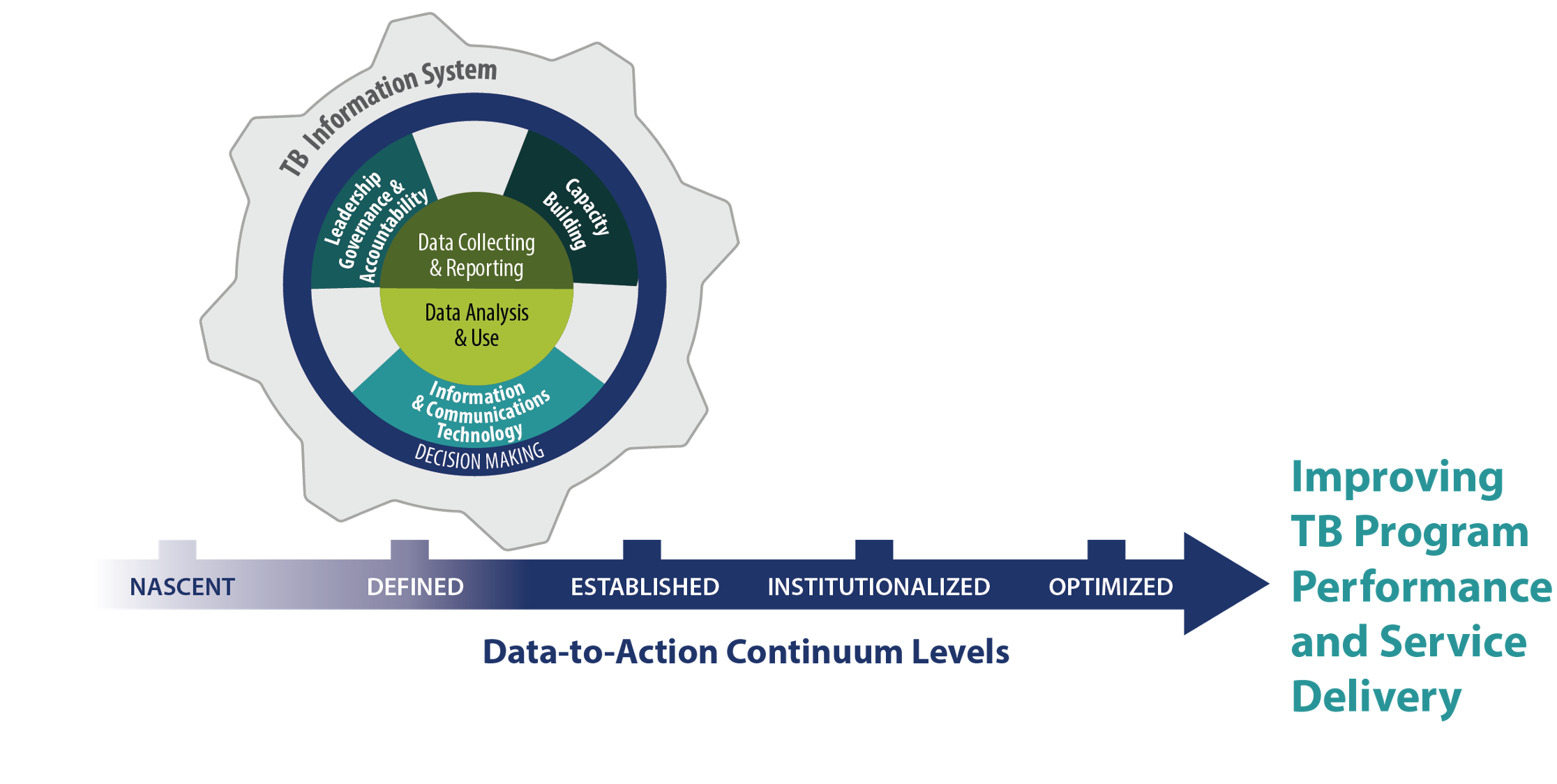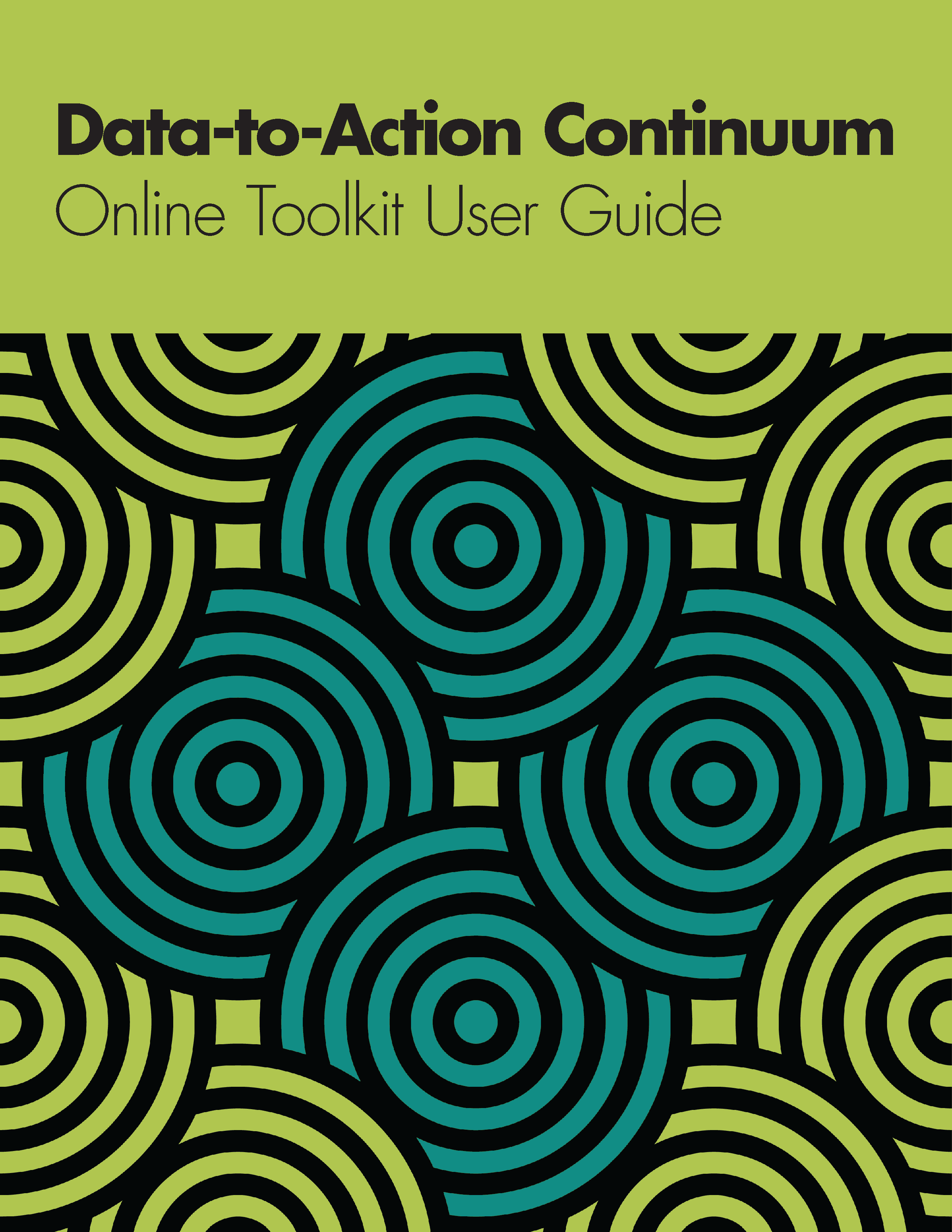The Data-to-Action Continuum (D2AC) is a web- and Excel-based tool with the aim to gauge country and National TB Program (NTP) capacity to translate data into action to improve NTP performance and improve TB data quality and use.
Interested in Implementing the D2AC Tool?
If you would like to implement the D2AC Tool in your area, please request an implementation.
To learn more about the D2AC, please visit the TB DIAH website's page that presents the brochures, guidance documents, and technical reports published about the D2AC: https://www.tbdiah.org/assessments/d2ac
Introduction

The conceptual framework shown here describes organizational, human, technological, and process-related factors affecting data use capabilities. The framework highlights an interlinked and cyclical evolution of the health information system involving tuberculosis data collection and reporting-, analysis-, use- and dissemination-related interventions. These interventions build on the leadership and governance and capacity building efforts of a given NTP. The framework shows that the interlinked interventions follow a continuous improvement approach to achieve the advanced maturity levels (often identified by descriptors such as nascent, defined, established, institutionalized or optimized) which are associated with an improvement of NTP performance in terms of using data for proactive and responsive clinical, programmatic, managerial, and policy decision making.
Continuum Levels
The purpose of the Data-to-Action Continuum Tool is to guide the assessment of data use capabilities to routinely monitor and improve data use attributes associated with TB program management and service delivery at community, facility, district, sub-national, and national levels. The maturity assessment framework will be aligned with the goal of informing and improving program implementation.
| Continuum Level | Description |
|---|---|
| 1 (Nascent) | Formal processes, capabilities, experience, or understanding of data use issues/activities are limited or emerging. Formal processes are not documented, and functional capabilities are at the development stage. Success depends on individual effort (few committed users). Predominantly paper-based data management system. |
| 2 (Defined) | Basic processes are in place, based on previous activities or existing and accessible policies. The need for standardized processes and automated functional capabilities is known. There are efforts to document current processes, policies, and capacity building needs. |
| 3 (Established) | There are approved documented processes and guidelines tailored to data use. There is increased collaboration and knowledge sharing. Need for external technical assistance is clearly identified. Innovative methods and tools can be implemented and used to extend functional capabilities. |
| 4 (Institutionalized) | Activities are under control using established processes. Requirements/goals have been developed and a feedback process is in place to ensure that they are met. Detailed measures for processes and products are being collected. |
| 5 (Optimized) | Best practices are being applied, and people and the system are capable of learning and adapting. The system uses experiences and feedback to correct problems and continuously improve processes and capabilities. Future challenges are anticipated, and a plan is in place to address them through innovation and new technology. Processes are in place to ensure review and incorporation of relevant innovation. |
